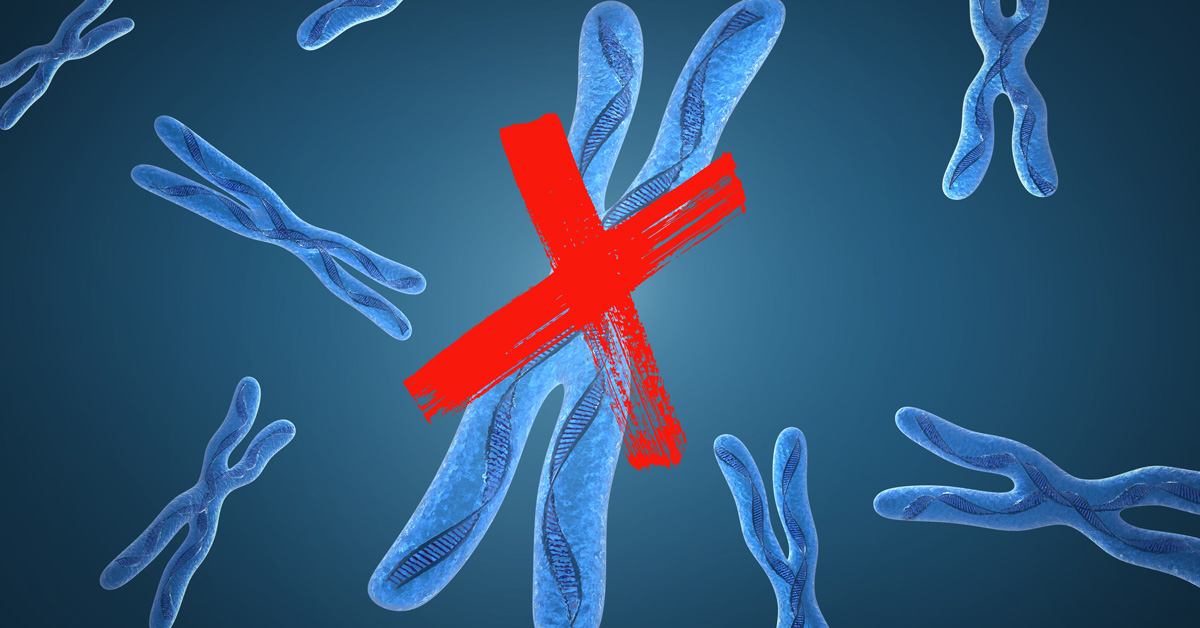
Study reveals yet another catastrophic unintended effect of gene editing. Report: Claire Robinson
In another of a long line of studies showing unintended effects of gene editing, the CRISPR-Cas gene editing tool has been found to cause the loss of whole chromosomes and genomic instability in mouse embryos.
The finding is yet another nail in the coffin for human germline (heritable) gene editing with CRISPR, though there are plenty of people who persist in advocating it. The study comes hot on the heels of another, which found that editing human cells with CRISPR caused chromothripsis, an extremely damaging form of genomic rearrangement that results from the shattering of individual chromosomes and the subsequent rejoining of the pieces in a haphazard order.
The genetic material in certain (“eukaryotic”) microorganisms, plants, animals and humans exists in bundles known as “chromosomes”. In organisms that sexually reproduce (plants, animals, humans), two copies of each chromosome are inherited, one from each parent. Loss of a chromosome results in gene imbalance and function, leading to severe inherited diseases and is also frequently seen in cancer. So any procedure that induces chromosome loss is bad news and should be avoided.
Both studies share some of the same authors, including David Pellman of the Dana-Farber Cancer Institute and Harvard Medical School.
Chromothripsis is an unintended on-target effect, meaning that it happens at the intended edit site. Chromosome loss is also occurring as an unintended side effect of the CRISPR editing procedure. This means that efforts to target the CRISPR edit more precisely will not reduce the chances of these types of unintended effects.
David Pellman correctly said of the chromothripsis finding, "You cannot make this go away by making the cutting more specific." In their published paper, Pellman and his co-researchers warned that chromothripsis is "an on-target toxicity that may be minimized by cell manipulation protocols or screening but cannot be completely avoided in many genome editing applications".
This will also apply to the chromosome loss finding. It doesn't matter how specific the CRISPR targeting is – this effect could still occur. There is simply no way of avoiding or controlling it.
The major worry with chromothripsis and chromosome loss in therapeutic settings is that it can lead to cancer or an inherited disease in any children of the affected patient. It would only take a single cell to be affected by chromothripsis or chromosome loss.
Relevance to gene editing in agriculture
Both unintended effects – chromothripsis and chromosome loss – are relevant to the gene editing of farm animals using an embryo manipulation process. This avoids cloning and thus bypasses the well-known risks associated with cloning of animals, but introduces the above-mentioned gene-editing-induced risks. Just like chromothripsis, chromosome loss could potentially lead to cancer and other diseases.
An example of how gene editing using embryo manipulation can go wrong is Alison Van Eenennaam's experiments with gene-edited cattle. Van Eenennaam and colleagues tried to cleanly target the insertion of a gene into cattle embryo DNA that would lead only to the birth of male calves. Instead what they got was just one live calf – which turned out to have seven copies of a gene integrated in its DNA when only one was supposed to insert. Two of them had been inserted backwards. In addition, the integrated gene copies were not clean; that is, the whole bacterial plasmid DNA construct that carried the male-determining gene was inserted rather than just the desired gene sequence. So the research programme that was intended to create an all-male herd for the beef industry failed miserably. This is a classic illustration of how far gene editors are from being able to control what they are trying to do.
Research now needs to be done to see if chromothripsis and chromosome loss occur in gene-edited plants. Currently, most researchers use inadequate screening methods to check for unintended outcomes of gene editing, meaning that these effects can be missed. Whole genome long-read DNA sequencing and long-range PCR should be used in combination to ensure that as many genetic errors as possible are picked up. Then their consequences must be investigated, to ensure that they do not result in unintended effects, such as unexpected toxicity or allergenicity.
---
The new study:
Whole chromosome loss and genomic instability in mouse embryos after CRISPR-Cas9 genome editing.
Stamatis Papathanasiou, Styliani Markoulaki, Logan J. Blaine, Mitchell L. Leibowitz, Cheng-Zhong Zhang, Rudolf Jaenisch & David Pellman Nature Communications volume 12, Article number: 5855 (2021) https://www.nature.com/articles/s41467-021-26097-y
Abstract
Karyotype alterations have emerged as on-target complications from CRISPR-Cas9 genome editing. However, the events that lead to these karyotypic changes in embryos after Cas9-treatment remain unknown. Here, using imaging and single-cell genome sequencing of 8-cell stage embryos, we track both spontaneous and Cas9-induced karyotype aberrations through the first three divisions of embryonic development. We observe the generation of abnormal structures of the nucleus that arise as a consequence of errors in mitosis, including micronuclei and chromosome bridges, and determine their contribution to common karyotype aberrations including whole chromosome loss that has been recently reported after editing in embryos. Together, these data demonstrate that Cas9-mediated germline genome editing can lead to unwanted on-target side effects, including major chromosome structural alterations that can be propagated over several divisions of embryonic development.